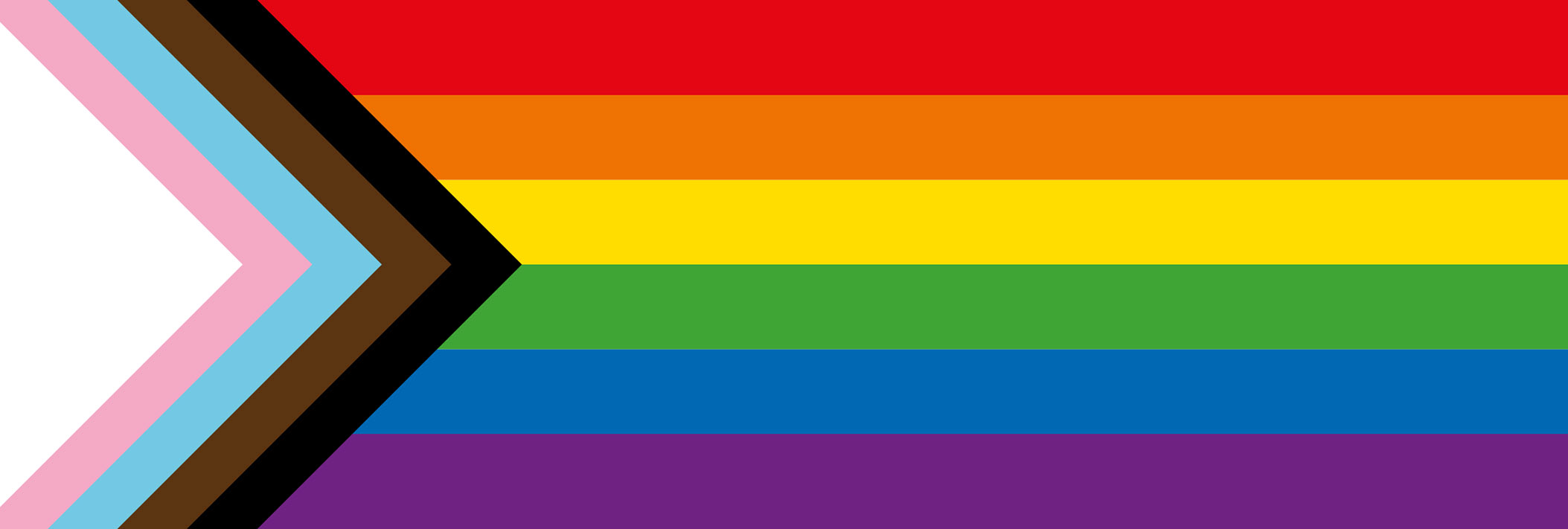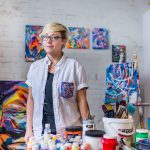
Each year the Innovation Hub joins all three U of T campuses to celebrate Pride Month and #UofTPride with the annual #DisplayYourPride event. This year, our Senior Project Assistant – Kaitlyn Corlett (she/her/hers) is reflecting on what Pride means to her this year at the Innovation Hub through the lenses of allyship, art, and resistance.

This year, there seems to be a deeper pull of responsibility and reflection that many of my peers have also shared as this Pride Month approached. Growing up in Canada, Pride has always been the highlight of my summer. It wasn’t until last June – in this major virtual shift – where there was suddenly a lot of space to realize how much I didn’t know about Pride and the histories woven throughout. As an ally, it was a time to reflect and learn about the roots of Pride Month and engage with communities and spaces beyond the parades I went to that were sponsored by large corporations. In light of this, I want to take a few moments to reflect on allyship, resistance, and joy within Queer and LGBTQ2SIA+ communities – and why this is so important.
Histories to Acknowledge
This year’s contribution builds on our 2020 #DisplayYourPride post, which centered intersectionality and the Black queer and trans-identified folx who catalyzed LGBTQ2SIA+ movements in the 1969 Stonewall Uprising, from which Pride Parades in the United States and Canada grew.1 Additionally, labour movements, the Black Civil Rights Movement, youth counterculture, and so many more moments in history interconnect with what Pride is today, and who is (or needs to be) equitably represented.2 For example, it wasn’t until 1990 in Winnipeg, Canada that the term Two-Spirit (2S) was woven into LGBTQ2SIA+ to acknowledge various gender identities and expressions of Indigenous folx. It was an important addition to acknowledge Indigenous identities and begin decolonizing facets of Pride and its history.3
Research shows that Black LGBTQ2SIA+ communities, Transgender folx, and those with disabilities continue to experience more barriers to inclusion in political, social, economic and LGBTQ2SIA+ spaces and opportunities.4 While there’s so much to celebrate, Pride is a reminder that there is still a long way to go. It continues to evolve and shift facets of mainstream systems, structures, and cultures that are still unsafe for many individuals. We have seen this in the last year throughout the world, from Black Lives Matter, administrations actively harming LGBTQ2SIA+ rights and access to resources, and increased police brutality in BIPOC and LGBTQ2SIA+ communities worldwide.
A Space for Joy

While these histories that I’ve mentioned are heavy and complex, it’s important to remember that Pride is a powerful and celebratory space generations continue to fight for. Through joy, creativity, and artistry there’s resistance and strength. Celebrating queer love, representation, opportunity, creativity, and innovation is a radical act we can all be intentional about, and truly uplift LGBTQ2SIA+ communities. There are many ways to do this, from actively contributing to LGBTQ2SIA+ communities and spaces, holding space for conversation and opportunities, or advocating for LGBTQ2SIA+ rights. These are some of many aspects that we can all do to ensure Pride is not a performative space – it’s transformative and incredible.

With this, we’re excited to share our virtual gallery of Queer and LGBTQ2SIA+ artists and creatives that our team at the Innovation Hub has compiled. This is by no means a complete list but we hope that this gallery opens new conversations, ways of thinking and celebrating, and opportunities for you to directly support LGBTQ2SIA+ art and resistance.
Happy Pride, all – and we look forward to many other creative contributions at #DisplayYourPride holds space for this year! To interact with the artists our team has curated and resources available this Pride Month at U of T, click the titles below.
Our #DisplayYourPride Virtual Gallery Visual Artists: Mando (Amanda Wand) https://www.mandoandtheworld.com/abouttheartist Mando (Amanda Wand) is a Toronto-based abstract intuitive painter that uses painting to process her lived experiences and emotions. She does not plan her pieces, instead, she allows her vulnerability to lead the way. As a prolific painter, this process creates multiple authentic works representing the full spectrum of human emotion. Every piece is an extension of her subconscious and they all hold a certain energy and message. Her work is influenced by how people treat others and themselves. It explores concepts of connectivity, identity, and self-worth. Mando has exhibited her work in group shows in Toronto (Twist Gallery, Arta Gallery) and New York City (Agora Gallery). She is currently represented by Kefi Art Gallery and Esperanto Gallery. Website: https://prod.virtualagent.utoronto.ca/ Redwood Bead by Talitha Tolles Marisa Fulper Marisa Fulper Estrada is a non-binary Colombian-American designer / artist / writer / thinker who keeps a book in one hand and a piece of chocolate in the other. They are from Ann Arbor, Michigan, have lived in Copenhagen, Mexico City, Detroit, Berlin, and call Toronto home. Website: http://marisafulper.com/ Poets: Billy-Ray Belcourt: is a writer and academic from the Driftpile Cree Nation. His work spans from award winning poetry, books, creative and more that navigate queerness, life experiences, and more. Learn more at: https://billy-raybelcourt.com/ Dionne Brand: is a renowned poet, novelist, and essayist. Her writing is notable for the beauty of its language, and for its intense engagement with issues of social justice, including particularly issues of gender and race. Learn more at: https://www.uoguelph.ca/arts/sets/people/dionne-brand Authors: In addition to these incredible artists and creatives, we invite you to also visit this article by CNN on 20 books that are essential to reading this Pride Month. 
 Talitha Tolles (she/her) is an Indigiqueer facilitator, storyteller, artist, and above all else, a strong, resilient, Métis woman. Talitha comes from the Vasseur-Longlade family line who were Drummond Island Voyageurs that fought to create what is known today as the Georgian Bay Métis Community. Today Talitha lives, works and plays in Prince Edward County…. All of this lived experience this has led Talitha to her true passion, Redwood Bead. Redwood Bead is a small business focusing on traditional and contemporary jewelry design. All techniques have been learned from incredible artists around Turtle Island but her most patient and loving teacher has been her Mother. Website: https://www.redwoodbead.com/
Talitha Tolles (she/her) is an Indigiqueer facilitator, storyteller, artist, and above all else, a strong, resilient, Métis woman. Talitha comes from the Vasseur-Longlade family line who were Drummond Island Voyageurs that fought to create what is known today as the Georgian Bay Métis Community. Today Talitha lives, works and plays in Prince Edward County…. All of this lived experience this has led Talitha to her true passion, Redwood Bead. Redwood Bead is a small business focusing on traditional and contemporary jewelry design. All techniques have been learned from incredible artists around Turtle Island but her most patient and loving teacher has been her Mother. Website: https://www.redwoodbead.com/
Resources Available and Additional Notes U of T Resources: Here are some of the many resources and opportunities available at UofT this year!
Referenced Works:
Additional Resources Consulted:
Additional Notes
0 comments on “#DisplayYourPride 2021: Centering Resistance, Joy, and Creativity”